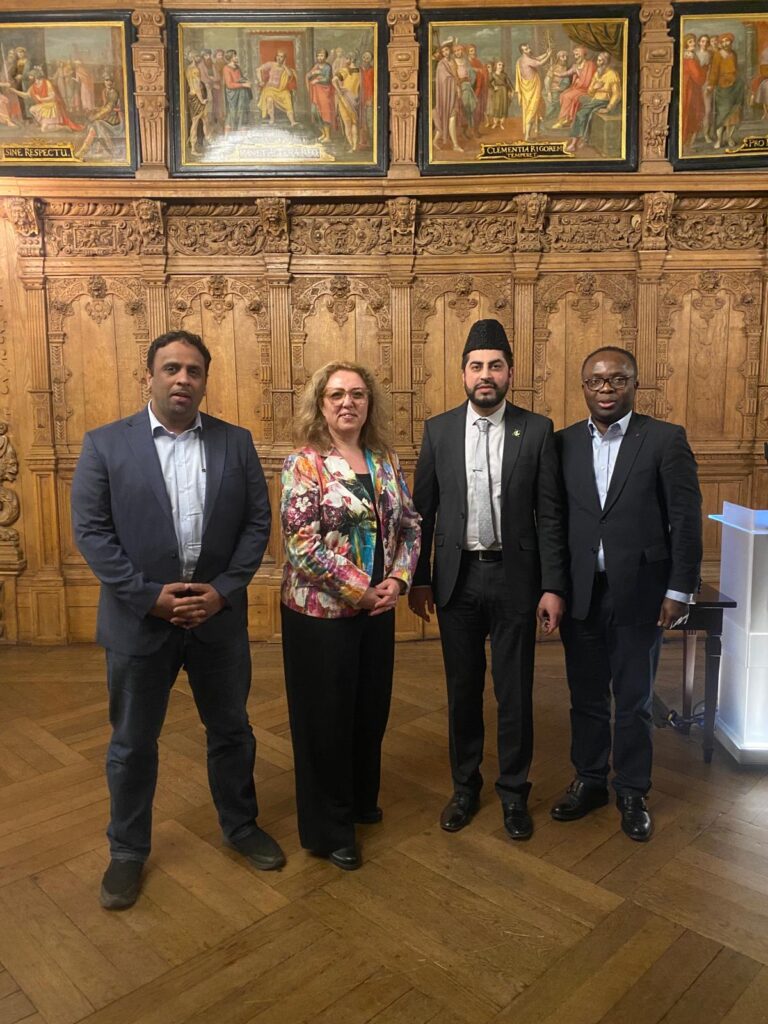Syed Salman Shah, Missionary, Germany

In a world where appearances often serve as barriers, symbols can sometimes build bridges. This truth was brought home to me during an interfaith program, where my attire – a Jinnah cap – sparked an unexpected and meaningful conversation.
The Jinnah cap perched on my head is not merely a garment. It is an expression of identity and devotion, a symbol which is deeply rooted in the Islamic tradition. For me, it represents modesty and the practice of following the Sunnah – the way of the Prophet Muhammadsa – to cover one’s head. This symbol carries with it a silent message, one that speaks of faith, respect, and a commitment to higher principles.
After the main interfaith program ended, I walked into the hall where people were milling. It was already abuzz with voices of various faiths sharing perspectives, united in a common quest for understanding. My cap immediately set me apart, silently proclaiming my association with Islam.
While I expected the usual glances of curiosity, I noticed something surprising. Many people turned to look at me. Some waved, their gestures warm and welcoming, while others gave me a thumbs-up – a simple but profound sign of respect and encouragement. It was as if my appearance had resonated with something in their hearts, sparking interest and goodwill.
Among those who noticed me was an elderly lady of Christian faith, who eventually approached me. Her eyes were warm with curiosity as she said, “I’ve been looking at you for a while now, wondering how to approach you. I saw your hat from a distance and felt compelled to ask about it.”
Her candid approach surprised me, yet it was a reminder of the power of a visible symbol. Her curiosity bridged the gap between two individuals of different faiths, and her question opened the door to a conversation rich with mutual respect and learning.
We spoke for a while. I explained the significance of the Jinnah cap – not as a mere accessory, but as a cultural and spiritual emblem. I shared how it reflects a commitment to modesty and respect, values that are cherished in Islam. As a missionary of the Ahmadiyya Muslim Community, I also spoke about my faith’s emphasis on peace, dialogue, and unity among all people. She listened intently, and her questions were thoughtful and genuine.
Our conversation was more than an exchange of words; it was a meeting of hearts and minds. It underscored the fact that dialogue begins with curiosity and respect. What started as an inquiry about a cap became a shared moment of understanding – a testament to the bridges we can build when we choose to approach one another with openness.
In that room filled with people from different walks of life, my Jinnah cap became a silent ambassador of faith, sparking a connection that transcended barriers. It reminded me that every symbol we carry, every action we take, holds the potential to communicate something greater than ourselves. It is up to us to ensure that the message we convey is one of peace, understanding and mutual respect.
As we parted ways, the woman thanked me, saying, “Your hat drew me to you, but your words helped me understand you.”
At that moment, I realized the profound impact of small symbols and sincere dialogue. Sometimes, all it takes is a cap to open a door – and a willing heart to step through it.

